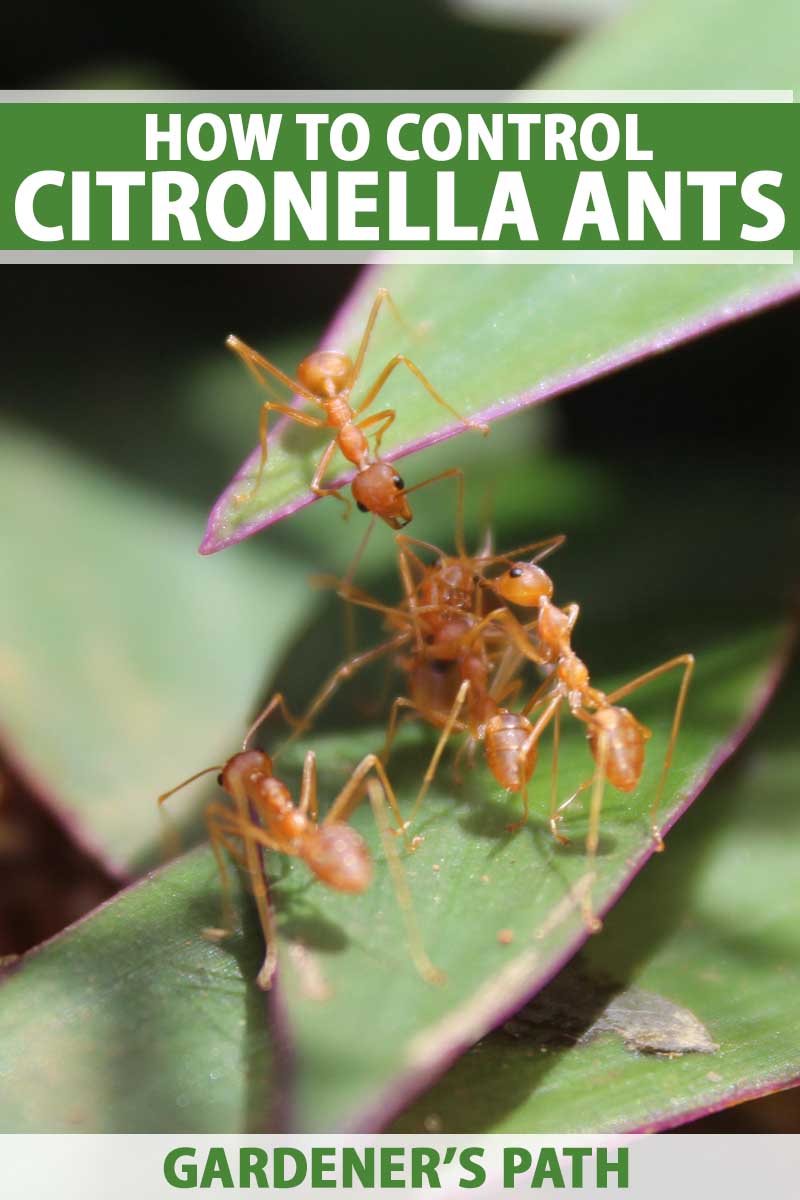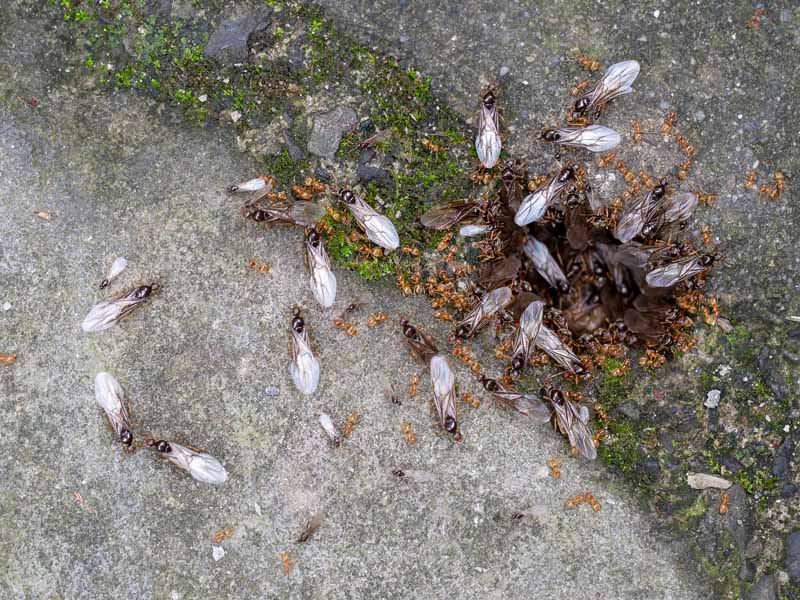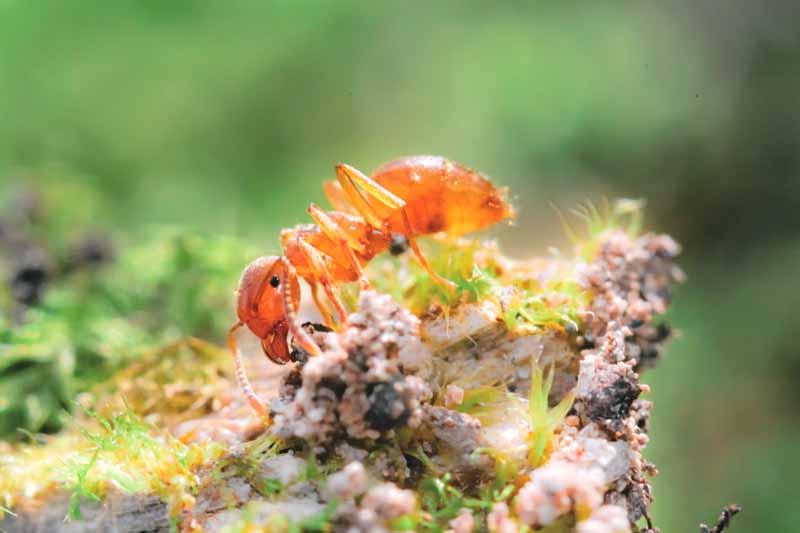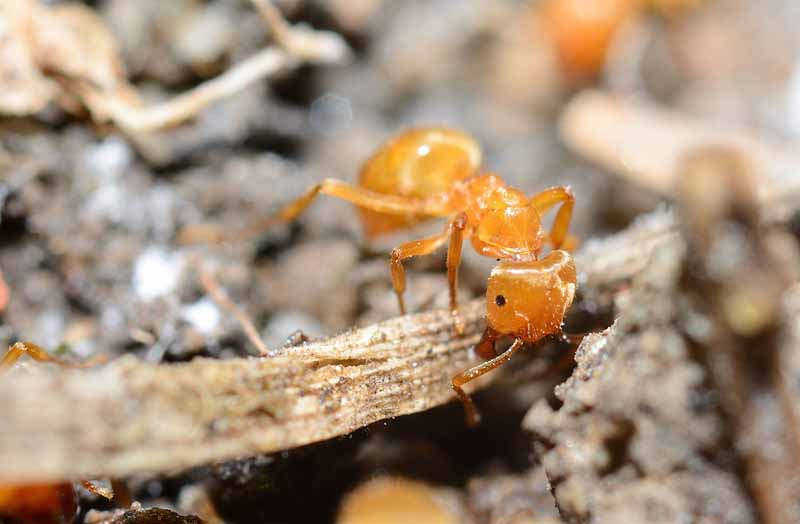Lasius interjectus / Lasius claviger
In a nice change of pace, citronella (or yellow) ants have no interest in human food.
So that means they will never bother me, right? Unfortunately, the answer is no.
Citronella ants swarm aggressively in the fall (and often throughout the year), and these swarms can make their way inside.
They pose no threat, but they often frighten homeowners who fear they are termites.

We link to vendors to help you find relevant products. If you buy from one of our links, we may earn a commission.
We at Gardener’s Path will explain the difference between citronella ants and termites and explain what to do when these irritating insects invade your home.
What You Will Learn
Identification
As their name suggests, citronellas are easily identified by the lemon verbena or citronella smell they give off when they are stressed or you crush them.
They are also known as larger yellow ants (due to their coloration) and are about 1/8” long. Their scientific name is Lasius interjectus (formerly Acanthomyops interjectus).
The aptly named smaller yellow ants (Lasius claviger) looks just like the larger ones except that they are smaller.
How to Distinguish Citronella Ants from Termites
At first glance, the swarming citronella ants that fly to mate look alarmingly like termites. They can even be reddish-brown in color.

At this stage, they are about 1/4 inches long – just the size of termites.
Another reason they are often mistaken for termites is their tendency to push up soil as they migrate through the ground in lawns or gardens.
The smell is a key way to distinguish them from termites.
Also they have characteristic antennae with 12 segments. The first segment just reaches the head.
And citronellas have an unusual cluster of circular hairs around their anus.
Distribution and Biology
Both types are found throughout the continental US, and the large yellow ant is exceptionally abundant on the East Coast.

Citronellas live underground and act like little farmers. They tend aphids and mealybugs that live on plant roots.
What do they get out of this? These insects secrete sugar, which is called honeydew, and the ants feed on this.
Fortunately, citronellas have no interest in human food.
Colonies
Underground colonies can be in the middle of your lawn or garden. Or they may be in pastures, fallow fields, or open woods. Rotting logs provide another type of home for these insufferable insects.
Sometimes the colonies are very close to buildings and can be next to foundations and under concrete slabs.
Soil around the entrances to the colonies can give you an indication of their whereabouts.
Swarming Behavior
Normally you would not notice these nefarious insects unless swarms of them appear in your home!
They typically swarm in the summer, but they have been found in homes in early spring and late fall – possibly because the soil is warmer by heated structures.
Once you have identified that these swarms are not termites, you can relax and deal with the problem at hand.
Fortunately, the swarming citronella colony will not touch your food, damage your house, or try to reproduce inside.
The swarms typically only last for 3-4 days.
How to Manage a Swarm
Your best bet is to vacuum them up. It is not worth treating them with insecticide.
And to complicate things, citronellas do not respond to baits.
However, if you continue to get swarms, your patience will probably be exhausted.
One option is to caulk their entry points to the house to keep them out.
Another is to hunt down the colony and consider exterminating it.
Doing so would require powerful insecticides, and your best bet at this point is to bring in a professional exterminator.
Peaceful Ants That Swarm in Great Numbers
Citronella ants usually keep to themselves tending aphids and mealybugs on plant roots.

However, they swarm in large numbers throughout the year. During this process, they frequently enter houses where they are often mistaken for termites.
There are a number of ways to distinguish citronella ants from termites, and often you can solve the problem by vacuuming them up.
Have you fought off swarms of citronellas? If so, let us know what your experience was like in the comments.
And read on to learn more about controlling all ants including our specific guides on:
© Ask the Experts, LLC. ALL RIGHTS RESERVED. See our TOS for more details. Uncredited photos: Shutterstock.

I want Chlordane back !